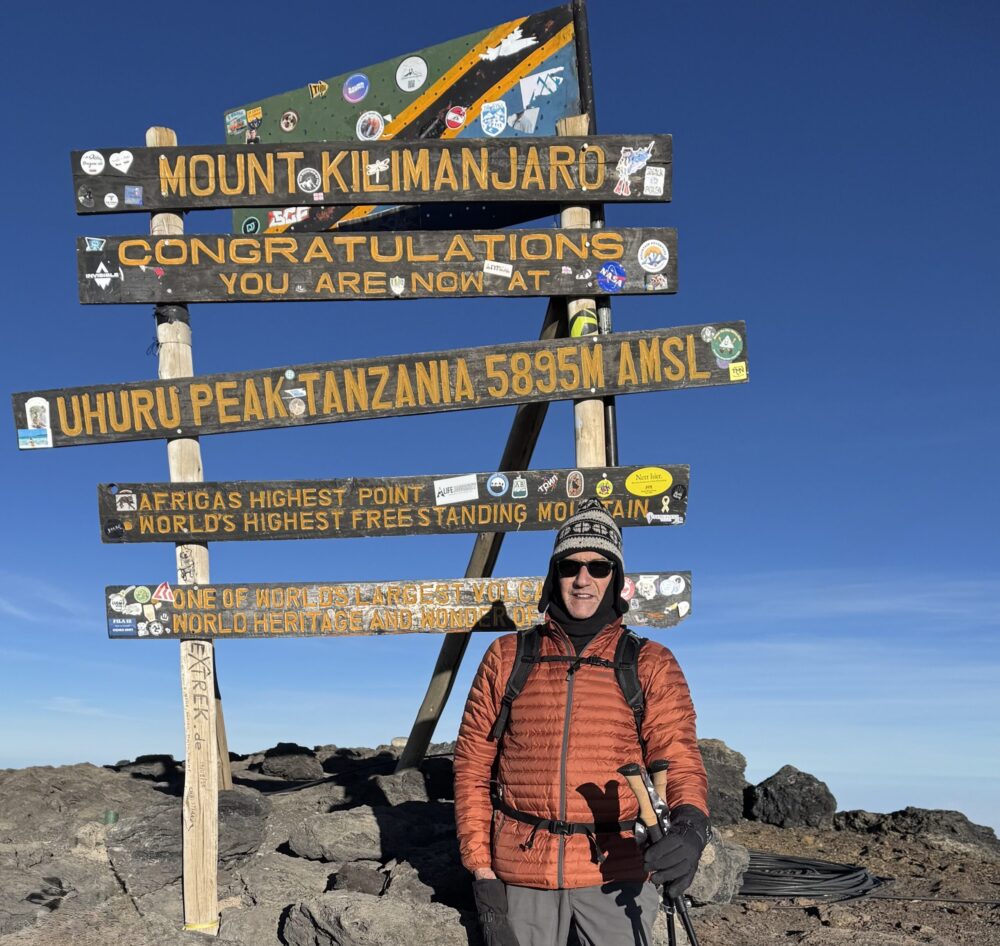Dedicated to the memory of my sister Reissa and brother Tony
About a month ago I turned 69 years old. A while back I had decided that in my 70th year I would climb to the top of the highest mountain in Africa: Tanzania’s Kilimanjaro. Around sunrise on October 17, 2025, after an arduous ascent of nearly seven hours in the cold and darkness, I finally reached the summit. During what I consider an eventful life, it was a moment that I will certainly never forget in the time that remains to me.
On the way up to the national park a guide asked me when I had first heard of Uhuru, the peak’s name in Swahili. Like many others of my generation probably would, I cited the celebrated 1936 short story by Ernest Hemingway, “The Snows of Kilimanjaro,” a tale of mortality (which was later made into a Hollywood film starring Gregory Peck, Susan Hayward and Ava Gardner). Even above 19,000 feet there isn’t much snow and ice left on the dormant volcano, for a host of factors including human-caused climate change, but the views remain spectacular.
I’m not a serious trekker and definitely not a mountain-climber in any technical sense, although I am physically fit for my age and a seasoned high-altitude alpine skier. I was later dismayed to learn that my guide gave me only a 25% chance of summiting Kilimanjaro. An English friend more than a decade my junior texted me beforehand that people he met in Zanzibar said it was the toughest undertaking of their lives. On a four-day journey that took me upwards of 13,000 vertical feet over roughly 22 miles, through multiple climatic zones from rainforest to arctic, I knew with every step how challenging this was. Yet with failure always a possibility, I somehow never doubted that I would soon stand on Uhuru Peak.

I had chosen the often-maligned Marangu Route, the shortest but in some ways hardest because of its limited time to adjust to the mountain’s elevation and the difficulty of the final ascent. To the purists who would prefer to sleep in tents on the longer routes — rather than on bunkbeds in the unheated Marangu huts — I say, “enjoy!” Also, on a trip of just three weeks, I didn’t want to give up precious days on safari in the Serengeti and scuba diving off Zanzibar just to be more miserable.
On the first day we hiked through a monkeyed rainforest from the Marangu Gate to the Mandara Huts, rising some 2,800 feet over five miles in about five hours. On Day Two we climbed more than 3,300 feet over seven miles across moorland, reaching the Horombo Huts in under six hours. On the third day we arrived at the “base camp” of the Kibo Huts at an altitude of higher than 15,000 feet, up more than 3,000 feet over six miles of alpine desert in about four hours (thanks to fairly easy hiking conditions).
On Day Four, equipped with multiple layers of clothing and other cold-weather attire, daypacks, headlamps and hiking poles, we departed for the summit just before midnight. There was no moonlight to speak of but, fortunately, clear skies full of stars and little wind. It took nearly seven hours to reach Uhuru Peak, on a segment of the route far steeper than the previous ones, involving “switchbacks” (or what a skier would call traverses) and scrambling up rock fields. The Marangu Route saves this brutal 3,900 vertical feet over just four miles for last.
After a brief respite to take pictures of the incomparable vistas and ourselves, we needed to leave. Ironically, the daytime descent proved even tougher for me, as it required side-slipping down long stretches of loose sand and gravel, among other challenges. By the time we arrived at the Kibo Huts my legs were so shot that I engaged a helicopter service to return me to the nearby city of Moshi, an unheroic conclusion to an otherwise worthy achievement.








